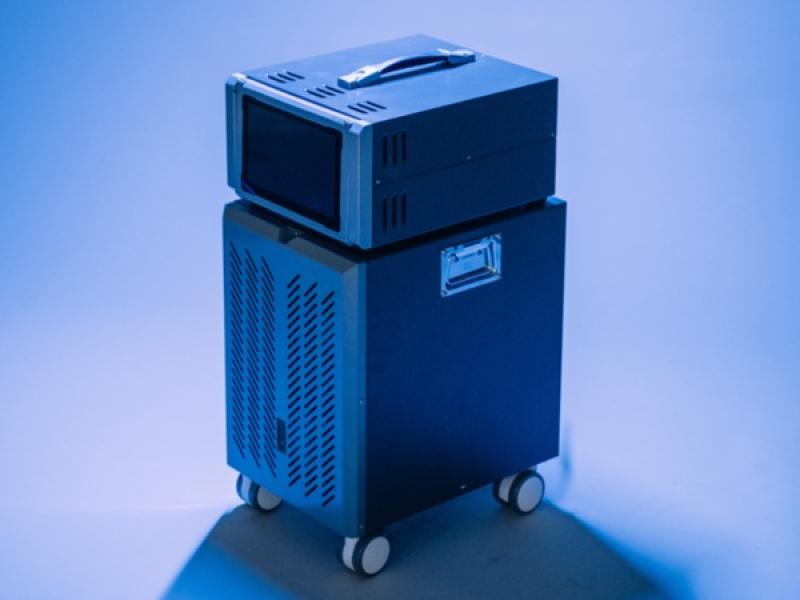
With the number of electric vehicle (EV) charging stations across Canada increasing every month, Laval, Que.-based Recharge Véhicule Électrique (RVE) is satisfying a growing market need with its DCC line of EV energy management systems.
The DCC components are attached to electrical panels to control EV charging activity when the panel is at full load by managing the energy levels at any given time. They can be installed in a variety of residential applications, including single-family residences and multi-unit residential buildings (MURBs).
“People still really haven't come around to realizing it's that complex. They buy the car and then they find a lot of barriers between the purchase of the car and how they can get the car running,” said Caroline Selber, an instructional designer with RVE.
“A lot of the conversation that you see in the media now still revolves around whether the vehicles themselves are viable," she continued. "It's so much more complex than that when you get down to it, because it really involves what kind of house you have.”
Through real-time monitoring, DCC products can detect when the total power consumption of the main circuit breaker exceeds 80 per cent and temporarily de-energize the charger. When consumption drops below 80 per cent for more than 15 minutes, it automatically re-energizes the charger.
DCCs only allow power to be delivered to the charger if the total demand is below the full capacity of the panel. They are compatible with all charging stations and EVs.
RVE’s history
Founded in 2015 by brother and sister David and Marie-Pier Corbeil, RVE quickly established a partnership with Montreal electrical equipment manufacturer Thermolec Ltd.
Thermolec served as a co-developer of the DCC intellectual property, and every iteration of the product line has been tested by the manufacturer. Thermolec recently completed construction on a new plant in Montreal, where DCC production capacity will reach over 100,000 units per year.
In apartments or condos, certain DCCs can allow direct utility billing to the individual unit. In single-family homes, they can be installed where no additional breaker space is available.
“There's no bill that needs to be split between owners. It's still the same bill that you control,” Selber said, “because what you're doing is making a hardware addition to your existing infrastructure, you're not going in on something additional.”
Frédéric Boucher, RVE’s CFO, explained there have been approximately 20,000 DCC sales so far.
About 15 per cent of the units are being used in the U.S, where it is present in 30 states. Of that, around half of RVE’s sales have been in California and the East Coast.
In Canada, RVE's largest markets are in B.C. and Quebec.
The company has doubled its sales each of the past two years.
“Our solution in terms of the 'S’ in ESG, we're trying to democratize and accelerate as well the adoption of EV into that segment,” Boucher said. “If you live in a condo in a city, you should not be penalized (for) having to strictly rely on public charging as well.”
To date, RVE has worked with over 500 condo associations to implement its technology.
RVE and Murbly
In 2020, RVE launched a separate platform, Murbly, focused on educating MURB owners, unions and condo managers on EV charging, installation and available subsidies.
“I would say that RVE took on the role of Murbly almost at inception, because the knowledge was there. They had worked on enough projects to know exactly how to approach the conversation,” Selber said.
“Murbly was created in order to have its own outlet to talk about the conversation.”
Case studies on Murbly’s website offer details about several existing EV charging installations in MURBs.
RVE’s future
Looking ahead, the first goal is for the company’s sales to grow evenly to a 50-50 split between the U.S. and Canada over the next two to five years. While opportunities in commercial buildings were acknowledged, Boucher said RVE plans to stick to home charging for now.
The company is planning on its first round of financing with “a couple of key players in Canada” early this year.
There are no plans for European expansion at this time.
While no details were offered, Boucher also said the next generation of RVE products will be released in the next 12 to 18 months. There was also mention of improving internet-of-things capability throughout its product line.
Selber and Boucher also offered insight into a project designed to help those relying on “common infrastructure” to charge their EVs. Boucher explained the product will increase the number of EVs which can be plugged into a common charging area by “three or four times.”
“(Obsolescence) is a very old problem. And we don't have to approach it with the highest version of technology,” Selber said. “It's really about energy management, remembering that this can be a simple solution. We don't have to overcomplicate it.”










